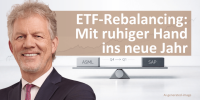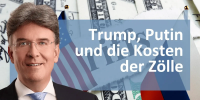U.S. stocks were mostly higher to finish March despite a banking crisis that caused the second & third-largest bank failures in U.S. history. The market’s mood and outlook shifted as investors’ expectations about the Fed’s policy path drove a significant rotation into growth names, with big tech, semis and software among the notable beneficiaries.
The month started with thoughts of a higher terminal rate in response to stronger-than-expected economic data, supported by comments from Fed Chair Jerome Powell’s congressional testimony about accelerating the pace of rate hikes if necessary. However, investors quickly focused their attention on bank deposit stress and losses on held-to-maturity (HTM) assets, as an accelerating bank run brought about the rapid regulatory shutdown of Silicon Valley Bank (SVB) and Signature Bank (SBNY). Both banks had an unusually high ratio of uninsured deposits that spooked customers into seeking insurance.
On March 22, the Federal Reserve announced another 25bps rate hike at the end of its two-day policy meeting, bringing the targeted federal funds rate to 4.75-5.00%. During his press conference, Fed Chair Jerome Powell noted that the central bank may be nearing the end of its rate-hiking cycle but he qualified that the inflation flight is not over. Most investors still expect at least one more rate hike this year. The next FOMC meeting is May 2-3.
Growth stocks have substantially outperformed value stocks to start 2023. We believe this creates an opportunity for Value Investors. The market is pricing a cut in interest rates sooner than Powell’s comments imply. The current environment of rising interest rates will continue to put a premium on near term cash flows, which should benefit our portfolio of companies.
As value oriented stock pickers, we believe now is our time to shine. We continue to seek franchise businesses with barriers to entry, pricing power, recurring revenue and large free cash flow generation that are trading below Private Market Value. The environment is still ripe for value surfacing catalysts: while M&A activity was down in 2022, it is still robust compared to most historical years. Companies have many opportunities to pursue financial engineering, not limited to M&A. We believe our portfolio of holdings is well positioned to thrive in this environment and their value will be recognized by the market in due time.
Global M&A volume totalled $580 billion in the first quarter, a 23% sequential decline from the fourth quarter of 2022 and a decrease of 44% compared to the first quarter of 2022. Healthcare was the most active sector for M&A, totalling $97 billion of dealmaking, an increase of 60% compared to 2022, and it accounted for 17% of all deals. Technology and Industrials were the next most active sectors, accounting for 17% and 13%, respectively. Private Equity activity remained robust, accounting for more than 25% of deal volume in the first quarter. Despite the global slowdown in deals, public company M&A in the U.S. remained stable sequentially. Notable deals that closed in March include: Atlas Air Worldwide (AAWW-NASDAQ) which was acquired by Apollo Global for $5 billion, Coupa Software (COUP-NASDAQ) which was acquired by Thoma Bravo for $6 billion, Vivint Smart Home (VVNT-NYSE) which was acquired by NRG Energy for $5 billion, Altra Industrial Motion Corp. (AIMC-NASDAQ) which was acquired by Regal Rexnord for $5 billion, and Duck Creek Technologies (DCT-NASDAQ) which was acquired by Vista Equity Partners for $2.5 billion, among others.
Despite the noted volatility this month, the convertible market finished slightly higher with strong performance following the CS acquisition. Convertible performance is more a function of underlying equity movements than interest rates, but both factors had a positive contribution over the last few weeks. Issuance has continued to trickle in and we have added some recent new issues to the portfolio. Generally, these have helped increase current yield while diversifying the portfolio with balanced convertibles.
We continue to remain optimistic for the possibilities of convertibles as an asset class this year, as they allow investors to position their portfolio cautiously while allowing them to participate when the market moves higher. There are many convertibles with a yield to maturity in excess of the long-term expected return of the convertible market despite solid and improving fundamentals. As we have noted previously, we have managed convertibles through multiple market downturns and have seen how they can be a great tool for companies to raise capital despite uncertainty while offering investors a risk-adjusted way to participate in a recovery.
04/19/2023
Swiss Fund & Finance Platform




